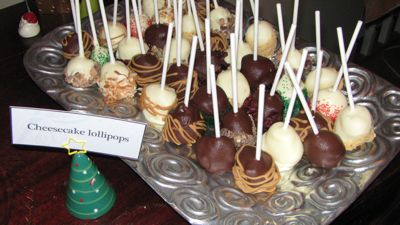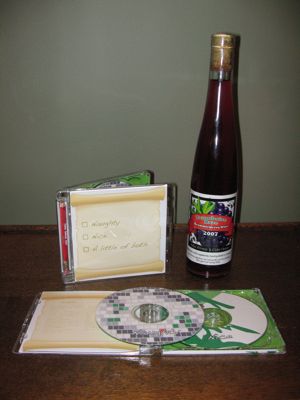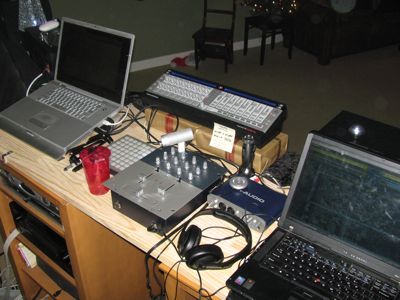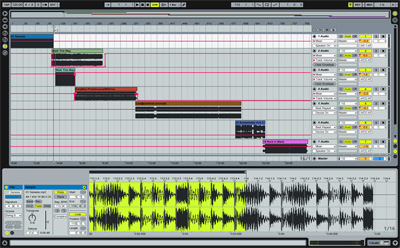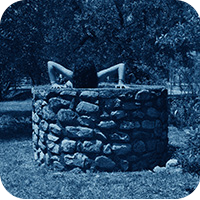Hot or not
Been a while since I geeked out about apps and such. Let me rectify that.
Except for the web apps and where denoted* these are all OSX apps. Complaints may be directed to my brand new domain www.whiffofcondescension.com, which may or may not be working because, well, its better than you … and you can smell it.
FacebookSync – Simple little thing that takes your OSX Address Book and yanks down info and photos for matches from your Facebook friends. Really handy.
MarsEdit – Best offline blog editor I’ve found. Blows Ecto away.
Displaperture – Miss the rounded screen corners in Leopard? This is for you. For the pill-capsule-shaped-screen obsessed among you, you can distort the edges much more than Tiger even allowed.
Songbird 0.4* – Mozilla-based music manager. Getting better all the time. Browsing music blogs with this is a dream.
Beatport Sync* – Free app for DJing and beatmatching. Super-simple. Traktor Lite, essentially.
MailPluginManager – Part of the Leopardized widescreen mail hack for Mail.app (which is indispensable), this add-on lets you manage plugins much more comprehensively.
GetTube – Simple app for pulling down YouTube videos locally.
Apps I want to like but have not given them their due. Any experience with these?
MemoryMiner* – Multiple media integrator for narrative-based presentations.
Bento – iWork-like database from Apple’s subsidiary, Filemaker.
Candybar – Icon/Dock über-manager from the makers of Coda and Transmit, which I love.
Web apps/sites:
Gmail IMAP – Just weeks after I moved all my POP mail to a jury-rigged IMAP redirect via Gmail, they released their native version. But the truth is, It is seamless and nearly-perfect. Well done, Google.
imeem – Very comprehensive, user-submitted streaming music site. Each track has an independent page. Really handy for letting others listen to tracks as reference.
5inch.com – Awesome alternative CD/DVD cases and labelling.
Fawnt – Free fonts that don’t look like an accountant chose them to accompany his clip artwork.
Vector Magic – Turn bitmaps into vector files.
And now to bitch a little. All about iTunes, probably the single most used piece of software I have on my machine.
Why is there no way to move or copy part of your library? This seems like an obvious feature for selective backup or at least something that a clever AppleScript could solve.
I’d love to be able to flag or mark sections inside a track for later reference. This would be extremely handy for tracks over an hour long. (I don’t mean chapters like you can break an audiobook into, but actual markers that could be rearranged.)
Related to that, now that the Finder has become iTunes-like how about moving some changes the other way and letting me color-label tracks/albums like you can for files in Finder?
Why is there no way to select multiple playlists at a time? Infuriating.
I love you, iTunes, but why do you treat me so?
Places 2007
Travel. Opens the mind, tortures the back, sates the soul, pays the bills.
Here’s where I’ve been in 2007. Not as eclectic as last year, but more provincial international destinations, which is a good thing.
Update: Using this service (thanks Roo!) it looks like I flew 75,080 miles this year. Yikes.
I’m no longer using overnight stay as the criteria for inclusion. If I visited, it’s here. Asterisks denote multiple visits.
Aransas Pass, TX
Armonk, NY*
Atlanta, GA
Austin, TX*
Barile, Italy
Beijing, China*
Charlottesville, VA
College Park, MD
Galena, IL*
Grand Lake O’ The Cherokees, OK
Hursley, England
Locks Heath, England
London, England
Los Alamos, NM
Los Angeles, CA
Matera, Italy
Naples, Italy
New Orleans, LA
New York, NY
Paw Paw, MI
Portsmouth, England
Potenza, Italy
Ravello, Italy
Ripacandida, Italy
San Diego, CA
Shanghai, China
Southampton, England
St. Louis, MO
St. Petersburg, Russia*
Venosa, Italy
Washington, DC*
White Plains, NY*
Winchester, England
Maybe our paths will cross next year?
Eversharp
In English graduate school my main focus was on technologies of writing, specifically the printing press. Imagine my surprise, then, to learn that I live right around the corner from the nursery (if not actual birthplace) of another such technology: the mechanical pencil.*
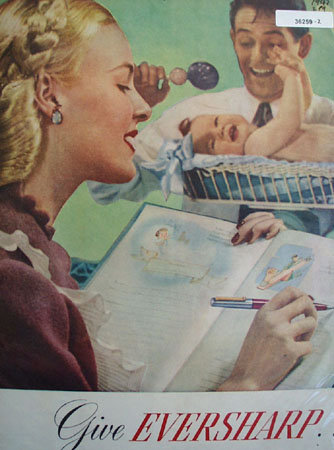
Our neigborhood of Roscoe Village in Chicago has seen its ups and downs over the decades. The latest up-cycle was begun in 1980 when the huge Eversharp Pencil Factory at Ravenswood and Roscoe was converted to residential condos, the largest industrial transformation of its kind in Chicago at the time, galvanizing re-development of the area. The Pencil Factory Lofts is an anomaly in our neighborhood of relatively low-density single-family homes, but I’m a little prouder of it each time I walk by now that I know its story.
In 1913 a chap from Bloomington, Illinois named Charles Keeran came up with the idea of fitting a metal stylus with replaceable lead inserts. This became the Eversharp mechanical pencil. He allied himself with Wahl Adding Machine Company (of Wahl clipper fame today — apparently someone else took the adding machine market around this time). In 1917 this partnership turned ugly when Wahl forced Keeran out and began marketing the pencils as Eversharp, a brand which continues to this day. Nearly all of these Pencils of the Future were churned out of the factory at Ravenswood and Roscoe.
In homage to the former life of the factory the developers of the loft painted giant pencils on the side of the water tank atop its roof. Actually they painted regular #2 pencils up there, presumably because mechanical pencils look a lot like pens and that would, you know, defeat the homage. But the tank isn’t there anymore. I went out to take a picture of it yesterday and I could not see it. Either I’m snowblind or it has been removed.
So, next time you use a mechanical pencil please pause to thank my humble neighborhood. Actually, does anyone use mechanical pencils anymore?
* It would have changed the world, too, if not for corrective paper fluid. Curse you Wite-Out!
Undead Yuletide
Last Saturday my six-year-old asked me about the relationship between St. Nicholas and Santa Claus. I said, too quickly, that they were the same person. My son then informed that he learned in school that St. Nick died a long time ago. As I contemplated my options at this conversational juncture, he asked matter-of-factly, “Is Santa a zombie?”
It took every shred of self-restraint not to run with that.
Then, Sunday we encountered the same problem as last year: too many Clauses around to suspend disbelief. I maintain that you cannot call someone who dresses like Santa “Santa’s Helper.” That’s just silly — and it is what elves are anyway. Either you say it is Santa Claus or you say it is someone dressed like Santa Claus. Or now … that it is one of Santa’s dead relatives back from the grave. Now quit being naughty or he’ll feast on your brains!
Fest
Though the basement looks like the aftermath of a meteor impact and the smell of alcohol emanating from my desk induces dry heaves in those of even robust health, I must ignore such distractions. For now is the time to tell the tale of the holiday party.
The metamorphosis of this particular annual get-together is actually the inverse of the changes in our larger social habits over the past few years. Which is to say: the party has gotten crazier while our lives — with one, then two, now three kids — have overall become more calm. Perhaps this makes a certain amount of sense. Perhaps it doesn’t matter. Perhaps you want me to stop this silly introspection and post photos of attractive partygoers. (In due time, in due time.)
It started when we first moved to Chicago in 2000 as a way of reaching out, establishing connections in a town new to us. The party then was a relatively sedate, buttoned-up affair. My wife insisted on calling it an “open house” and putting an end time on the invitation, apparently to encourage people to move fluidly in and out, but only during certain hours. (I never understood that. Is 11pm the last time people are allowed to come in or does everyone need to leave by then? Or both? Either way, it harshed my buzz, man.)
Back then it was all Christmas music, all the time. Which was fine. But, you know, just … fine. We never catered the party, though we went back-and-forth on the amount of food my wife would prepare. Sometimes just desserts, sometimes appetizers too. Why am I telling you all this? Because you must understand that this was all just practice, the farm leagues, a naive apprenticeship in the trade of party-as-a-verb.
Above, the clear fan favorite from this year, Cheesecake Lollipops. (Click for recipe.)
So here’s the short version of how it happens. A few weeks before Thanksgiving we panic. Typically we’re still reeling from getting three children costumed for Halloween (which also happens to be my four-year-old’s birthday) and want nothing more than a long winter’s nap. But with a Turkey Day break coming up we calm down a bit and put together a to do list. Then we resume panic.
Thelovelywife takes food, drink, hiring help, and most decoration not involving rewiring, plumbing or (and she will admit this) any design sense that rises above laying out a nativity scene in a sterile grid. I take invitations, party favors, music, and the increasingly intractable problem of ensuring equal distribution of attendees throughout all the house’s open space, excluding bedrooms (which may have to open up next year, sorry kids).
This year we added a light theme to the party. No, wait, come back. It wasn’t that bad. Just something to stitch together the aesthetic of the various visuals (invitation, favors, signage, etc) and to have something to suggest coherence of planning where there was none. The idea was naughty vs. nice. This is not to be confused with the last-minute Halloween ploy of taking a regular profession’s uniform and making it “naughty.” (Naughty Nurse, what a clever idea!) If I have in any way legitimized this practice by theming our party this way, I earnestly apologize.
I had been thinking about a double CD mix for the party favor this year and our new theme fit this rather well. I mean, the possibilities were endless: speed metal vs. calliope music, slap bass solos vs. Gregorian chant, glitch vs. anything. In the end the mixes were not thematically naughty or nice, but there is about a 20-40 beats-per-minute difference between the two playlists. Apparently, in my world if you are behaving badly you do it at a faster pace. Have a look at the tracklisting.
For the last four years we’ve used Coudal’s wonderful Jewelboxing system to package up the music. While the attention to detail of the cases and liner templates won’t make you a good designer the actual shape of the case’s hinge which forms a small empty chamber does rather beg for creativity. Two years ago we filled it with red, green, and white Tic Tacs. Last year, with glow sticks used for night fishing. This year, still smitten with the illuminated cases of last year, I sought out something that would glow for longer than a few hours. This led me to find a thing called a flourescent rod which hunters apparently use in their rifle sights. They absorb UV light and emit visible light. The irony of using accessories for hunting animals as party favors two years in a row was not lost on me. What was lost on me was how to make it work, thematically. What on earth does a flourescent rod have to do with a CD cover that looks like a list of who’s naughty and who’s nice? Damned theme.
The problem was solved by my wife who suggested shoving a small pencil in the hinge chamber. You know, for checking the list (twice)? We ended up ordering custom printed golf pencils with the name of the mix on them from a company who specializes in short-run golf pencils. They even agreed to a custom font, which forever endeared them to me. The best part is that, though we were pretty sure they would fit lengthwise, we knew that if they didn’t we could just sharpen them down. Thankfully we did not have to do this. You can get a good look here.
The theme served nicely (ahem) in allowing us to throw two parties essentially. This was a pragmatic consideration initially: the upstairs was really too crowded last year — and we were expecting about thirty more people this year — so we had to entice people to leave the food. The plan? Move the drinks to the basement and keep the people there by playing music — the kind without jingling bells.
So, things were nice upstairs. Fire in the hearth, tasteful decorations, appetizers, sweets, relatively quiet space for conversation, soft music with jingling bells. Downstairs (“you know, where Daddy lives” as the kids say) things were, if not naughty, then less strictly nice. For the backbar we cleared everything off my desk, a job of unwiring that I’d not wish on my scroogiest foe. We moved a bunch of furniture to the back hallway, effectively blocking any form of emergency egress (to quote the term the city uses in the letter of the law we were most certainly breaking). Then we pushed sitting surfaces to the walls, opening up … a dance floor. And all dance floors need a DJ booth, of course.
Now, alert readers of this blog will call me out on this, noting that it cannot be a coincidence that the people-density issue was solved by allowing me to be a DJ all night. But that’s part of what makes the season so magical. You’re asked to believe in things, like Santa, that you know not to be true. So, let us call the fact that I was a DJ a coincidence. And if you don’t believe then you must be a hateful Grinch.
The DJ booth itself was formed by the end units of our entertainment center turned around (so the components were facing the wall) and put on an angle. I slapped a piece of plywood across the top, secured it, threw a black tablecloth over it all and voila! Except that it could only be played comfortably by nine-foot giants. But that opened up the opportunity for the best part, the construction of the booth platform. This was a few bolted-together pieces of cut plywood on top of eight milk crates. I didn’t really know how sturdy to make it, but, according to my brother, there is a strength metric used in the world of professional DJ’ing that roughly corresponds to — how to say this? — its ability to support sexual congress without splintering. So we built to those specs, though I am here to admit that I did not fully test the platform before or during the party so I cannot claim the product to be certifiably sound.
It was all laptop DJ’ing. No turntables were harmed. But I wanted more of the spontaneity that a double-turntable setup offers since there’s little that’s as boring as watching a guy cue up tracks on a laptop. With two laptops, and a willing friend and brother, we were able to do some more complicated things, such as slave the MIDI clocks together so that no matter what one cued on one side it was in step with what was currently playing. This wasn’t beatmatching, more like BPM-matching, but it made things easier. Also, simply having two people up in the booth is more fun for the crowd since you can play off one another’s selections, make fun of each other, blame one another for missing a cue, etc. We were using a combination of Ableton Live and Native Instrument’s Beatport Sync with each laptop pulling off its own external drive of music. And we only tripped the amp’s protection circuit a few times, which I consider a success.
OK, so. Drinks, check. Tunes, check. Space to dance, check. Atmosphere? Not so much. We really struggled with how to set the mood without a real dance floor (way too expensive to rent), lasers, smoke machines, pyrotechnics, or hydraulics (next year, I promise). We needed ambient lighting and, since the invitation and mix both had a disco ball on them, this seemed a natural choice. Except that disco balls are invariably cheesy and there was no good place to hang one. But it occurred to me that we did have a little mirrored Christmas Tree, a “discone,” as decoration. If only we could rotate it and shoot some high-powered beam at it. My first solution was to stick it on an old record turntable I had, but even 33 revolutions per minute is way too fast. What I learned quickly is that a disco ball actually rotates very slowly. If it doesn’t you’re going to have a lot of barf to deal with on the dance floor.
The situation called for drastic measures. The situation called for LEGO blocks. I dug out an old Mindstorms set, Googled a bit, and hit paydirt. Unfortunately even this was too fast and, given my total avoidance of anything engineering-related in school, I had to beg a friend to teach me consult a series of experts, including a PhD, about gears in order to do anything about it. In the end I built a four-gear compound system that slowed the LEGO motor down to a crawl. I housed it all in thick black bricks, shone three LED’s at it and we had ourselves a homemade disco cone. Here’s a look at the innards of system.
In addition to this ambience we had a bunch of crazy YouTube downloads (and this which continues to crack me up) looping on the TV controlled by a hidden Mac mini courtesy of my pal Chris, the evening’s video jockey. Occasionally he would switch to the feed from the iSight camera mounted on the crossfader in the booth. Because, you know, sometimes people want to see the DJ’s actual fingers moving the volume slider close-up. Right? In any event, it was good fun. (Next year: full on beat-synched video-mixing.)
Well, it worked. Maybe too well. The basement was mobbed. People actually danced. And, being the DJ, I could arrogantly avoid eye contact and conversation with everyone. I permitted conversation only via cocktail napkin and I threatened to bounce anyone whose requests displeased me. The perfect way to host, if I may say. One legitimate worry we had was that we would end up actually throwing two parties, as if thelovelywife and I were merely tenants in the same condo complex. In reality this didn’t happen. There was good circulation early on and then everyone but the dance-phobic eventually ended up downstairs. The reverse problem from past years. Oh well. Did I mention I built a DJ booth?
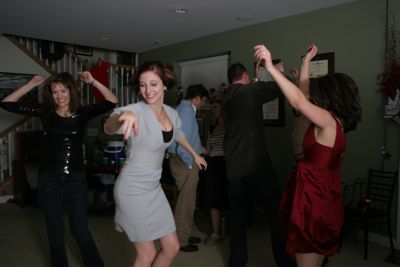
One “feature” piloted at last year’s party was a “photo booth” function where we hooked a crappy old laptop up to a high-end digital SLR on a tripod and allowed revelers to slap a key to take a shot, then view it immediately (with this app). It was great fun and provided a wonderful visual narrative of the night’s devolution. This year we added a slight delay on the photo snap and my brother hooked up an awesome pro flash canopy. My six-year-old was infatuated with it. He must have taken three dozen photos of himself and he appears, Forrest Gump-like, in a few dozen more. There’s nothing better than waking up the morning after a party like this and thinking, oh my god, we have a hard drive full of idiocy to look through. In the end, the camera captured 512 pictures. The first shot went off at 3:34 PM; the last at 2:36 AM.

So what went wrong? Well, the bartender was awful. The moment I saw him I knew he’d be a problem. Now, there’s nothing wrong with older bartenders. But this guy exuded curmudgeon and I knew he’d be impossible to deal with after a few hours trapped in the sonic hell of my brother and I DJ’ing. He was rude to our guests, refused to multitask, and just surly about the whole affair — exactly what you expect from a bartender in a bar, but not one you hire. The real problem, though, was that he refused to properly assemble the specialty drinks that my wife carefully planned out. You see, the naughty/nice theme extended even to the drinks with the Mistletini, Sleigh Bellini, Sticks and Cola, Yellow Snow, Sugar Plum Fairy, and Bramble Punch. Take the Yellow Snow, for instance. This was basically a slushy version of vodka lemonade. But what put it over the top was a honeyed glass rim with coconut stuck to it. The clean snow, get it? Oh, this pissed off Burgermeister Meisterburger in a big way. I think he actually sprinted out of the house at 11 PM.
Oh, also, remember the brambleberry wine from a few posts back? We gave this as a party favor along with the mixes. Lovely idea, but somewhere between bottling and our guests returning home, fermentation restarted in some of the bottles and … pop! there have been reports of corks flying off and getting red raspberry juice everywhere. Merry Christmas, we hope you enjoy your timebomb! Ooops.
That’s about all there is to say. We’re all ill now from exhaustion and the general turn in the weather. The house isn’t really back to normal and the thought of hosting people, even for a night, makes us misanthropic and salty. Still, the only downside to it all (besides the expense, hangover, and cleanup) is that it makes the actual day of Christmas somewhat anti-climactic. That’s the challenge: getting the house and our seasonal cheer back in shape by December 25. More eggnog, please.
Hope to see some of you at the party next year. Happy holidays!
Quick quiz
Did I stumble across this lovely search entry from my wife (which produced results as you see in the tabs) before or after this last weekend’s holiday bash?

Search query privacy indeed! (Tip to wife: Tools > Clear Private Data.)
Click for the astonishing answer.
Pre-party
This past weekend we threw our eighth holiday party in as many years. It was outrageous.
There are lots of choice tidbits and scads of photos, but right now I’m traveling to ice-pelleted NYC. As soon as I have some downtime the tale can be told.
For now, a photo that captures the tone of the evening pretty well.

More soon …
Making CD’s
So the annual holiday mix is about ready to go out. Shortly I’ll post the specifics on this year’s compendium, but for now a few tips having spent so much time in the Jewelboxing system putting it all together.
Warning, this is niche advice. Meaning, this might apply to one of my two readers. Really I’m posting this as Google fodder for future readers. A time capsule of advice, if you will.
If you use the Jewelboxing system you’re no doubt a fan of the simplicity and flexibility of the templates and the DIY construction of the cases themselves. Having made several hundred of the cases over the years I’ve come to the following conclusions.
- It is much easier to label the CD’s once you’ve set them in the case on the spindle. This holds them still while you apply.
- When ripping the perforations on the STtray sheet it is much easier to rip it latitudinally (the long side) first, then longitudinally.
- Those crazy tiny diagonal perforations near the hinge? Cut them with a small pair of scissors. Much easier than ripping them.
- Once you’ve printed the booklet inserts it is best to put stack them into 10 or 15 or so and weigh them down overnight with something heavy. This flattens them out so they sit in the tray better.
- When folding the edges of the STtray sheet (the parts that are at 90 degree angles to the tray itself) it is best to fold them at an angle greater than 90 degrees so that on inserting them into the tray there is resistance against the case wall. This makes for a tight fit and usually prevents the spindle tray from ripping the paper.
- Lastly, if you are putting anything in the hinge chamber don’t forget to rip off the little rectangle of paper that would normally be the spine. If you don’t, you won’t be able to see into the chamber edge-on.
And now to confirm the obvious: yes, I have spent too much time putting these suckers together. I need to go play in the snow.
Raspberry hooch
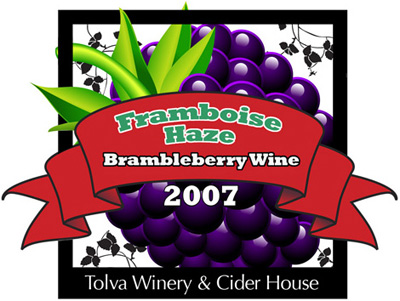
This year’s batch of homemade brew is complete and I am sure you are full of questions about it. Fear not, curious tipplers. There’s a FAQ just for you.
What’s a brambleberry?
A wild raspberry found in thorny underbrush, basically. In this case the brambleberries were black raspberries, known as Rubus occidentalis.
Why did you make wine from the berries?
Making wine from handpicked fruit has become a bit of a tradition.
What’s the alcohol content?
Very low.
Will this kill me?
Depends on what you do with it. If you ingest it, death is unlikely.
Why do I have to wait until spring to drink it?
Because it will taste better. It’s fine now, but by March it will be much more balanced.
What were the steps involved in making this?
See this photo strip for more details. Or this gallery at Flickr.
Isn’t there lead in the ground where the berries grow?
Yes, there is. Or rather, was. Most of it was mined away. And anyway lead leached into groundwater doesn’t make it through the cellulose membranes of plants.
I’d rather not attempt this unaccompanied. Do you have any recipe suggestions?
Sure. The best one is to pour a bit of the wine into a wheat beer, like you’d do to make a Kir. You can also make a nice punch with it.
Tell me an interesting fact about this wine.
The berries were picked in a single day in Galena, Illinois by John, Nathan, and Andrew Tolva on their property.
OK, tell me another one.
A photo of the “racking” process of the wine is currently the only image on Flickr to be tagged “ohmygoditisinmymouth”.
What being green means to most of America
My parents have let the lot at the home in Galena, IL return to natural Illinois prairie. This is cool in a natural-historical way, and certainly beautiful*, but it also takes a bit of work to rehabilitate the land after the tumult of excavation and construction. So, they hired the company Prairie Works as landscape consultants who’ve guided the process of planting and, in the case of the photo below, burning of the grasses as happens naturally every so often.
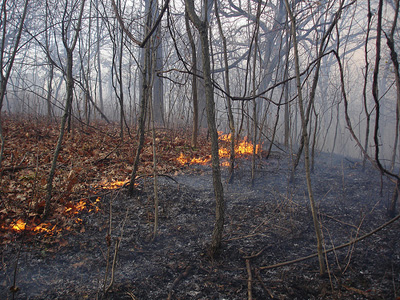
Recently I came across the Prairie Works blog maintained by Cory Ritterbusch and have been surprised at how interesting it is. City boy adds blog about prairie grass to his reader, imagine that. Consider the post about the culture of lawns in America:
In 2006 the American lawn reached a higher status among its citizens – it became the country’s largest irrigated crop. Between our golf courses, sports fields, town squares and residential lawns turfgrass now covers an amazing 40 million acres, or 80 percent, of non-farmed land.
40 million acres, sweet jesu. That’s a lot of agriculture for show.
Although the 1/2-acre area of grass that is carefully manicured by its owner seams rather harmless, it is the large-scale ramifications of millions of such owners that prove to be devastating. In 2005 it took 238 gallons of water per person to irrigate 40 million acres of turfgrass, which are being mowed with 800 million gallons of small engine gasoline and kept green by 70 million pounds of chemicals. All this costs an estimated 30 billion dollars annually (2005). The effects on water and air quality are staggering as are the 68,000 injuries sustained annually while mowing.
Am I the only one staggered by the amount of gasoline and water that it takes to keep something up that is in most cases an extension of a home’s aesthetic rather than functional?
Oddly enough, lawn care advertising confirms that most residential lawn care is a losing battle against climate, pests, traffic and other variables, unless more efforts, including watering and chemicals, are applied to the cause. The 70 million pounds of chemicals applied to turfgrass annually represent a higher concentration of chemical input than any other form of agriculture worldwide.
My suburban friends have probably stopped reading by now and written this post off as the rantings of a guy with a postage stamp-size parcel of grass in the city. Against lawns? That’s un-American! But I have to believe that there’s a sizable majority of middle America who, in suddenly eco-conscious America, believes that their ginormous lawns are part of the solution to environmental problems. I’m not sure that’s entirely true, but happy to read otherwise in the comments.
* Even if it does have an abandoned lead mine on the property. Ecologically sound or not?

